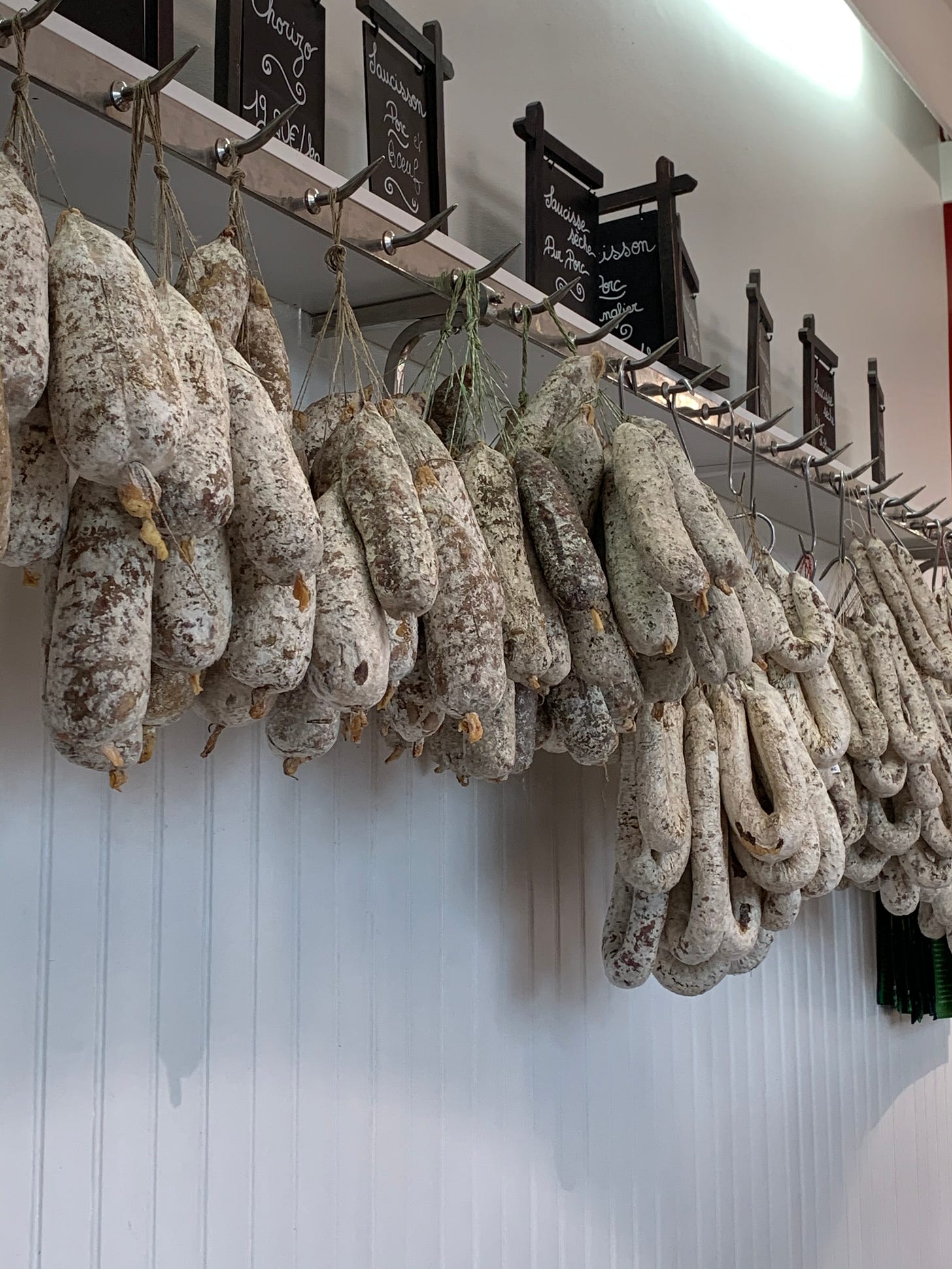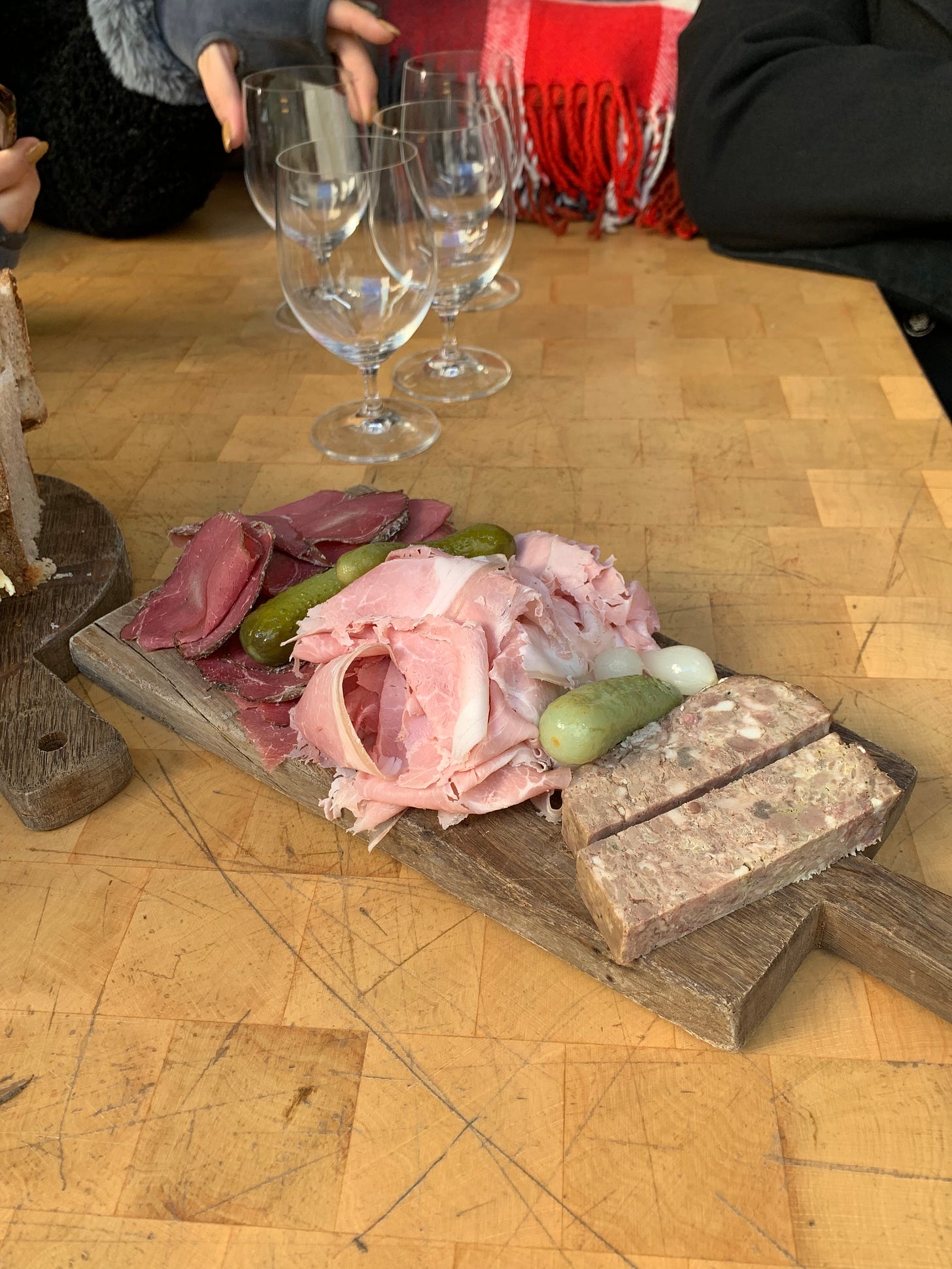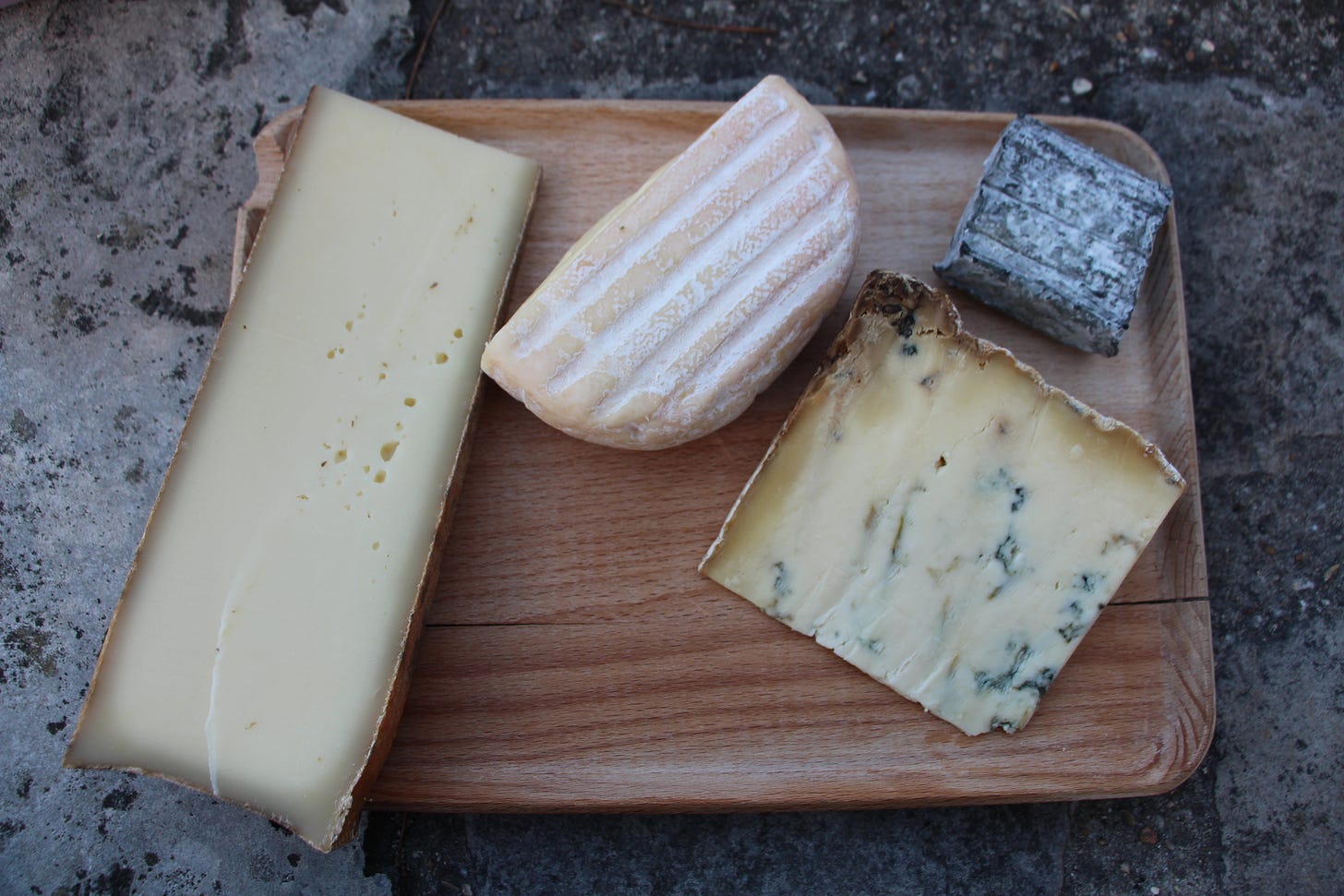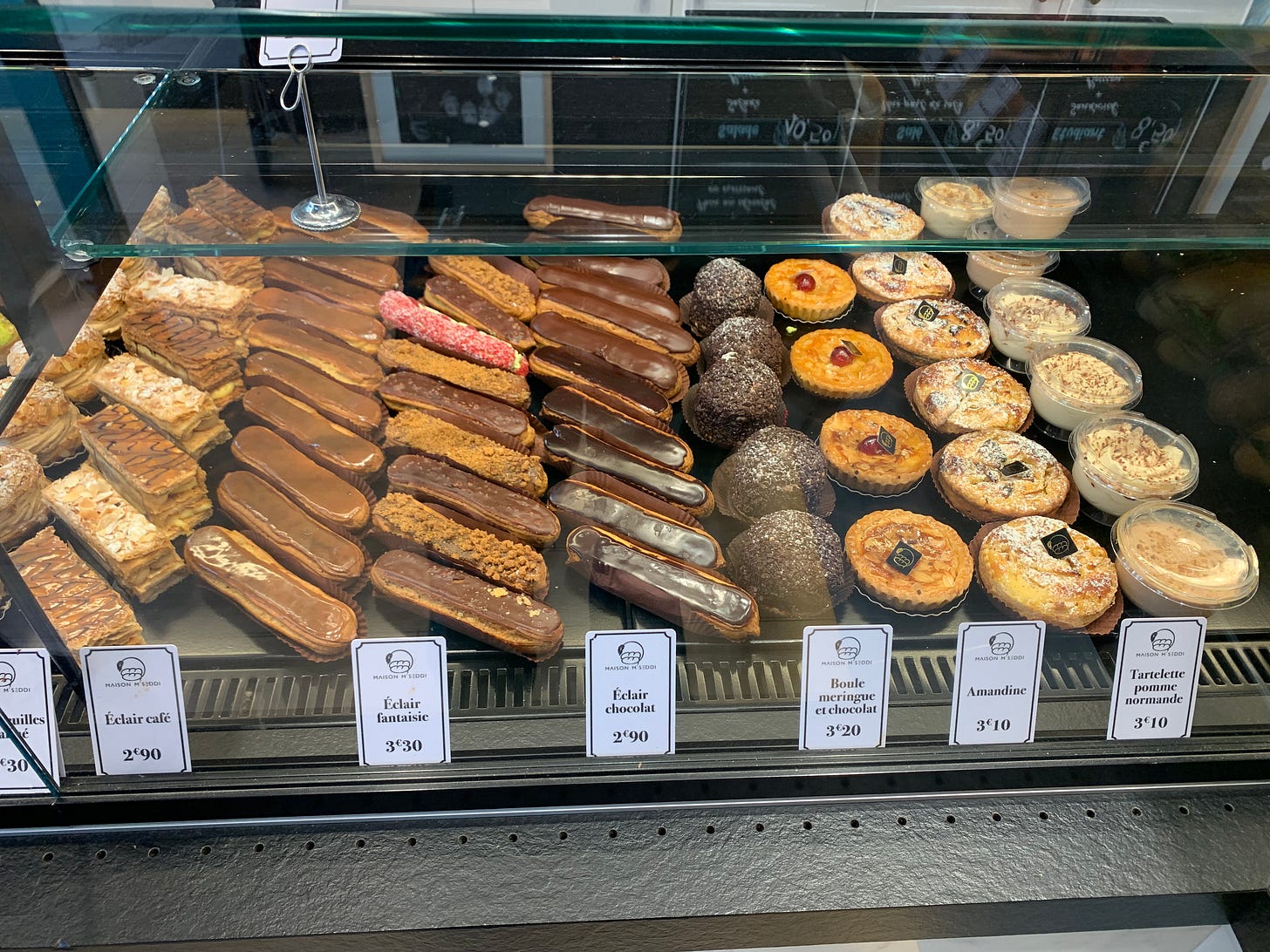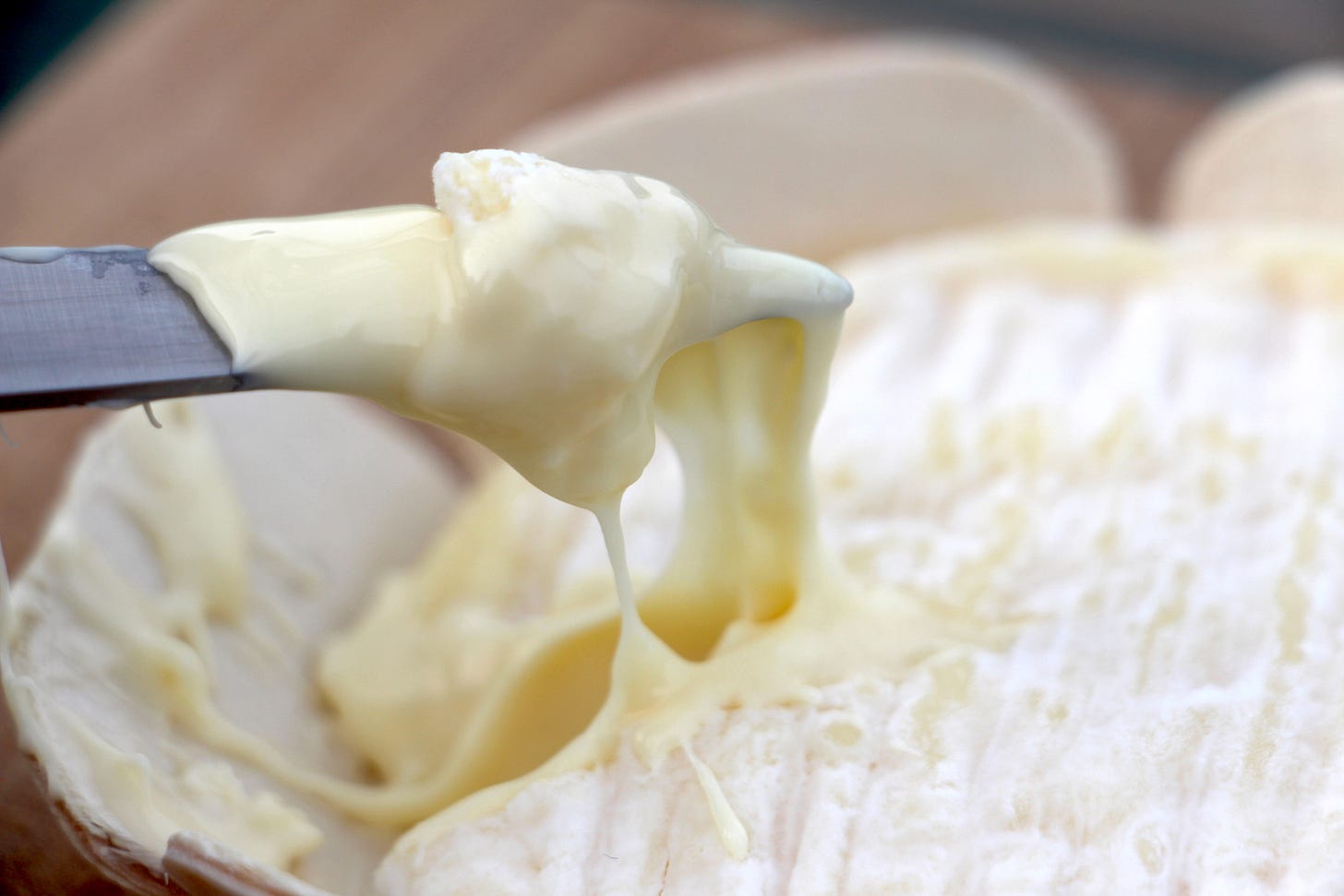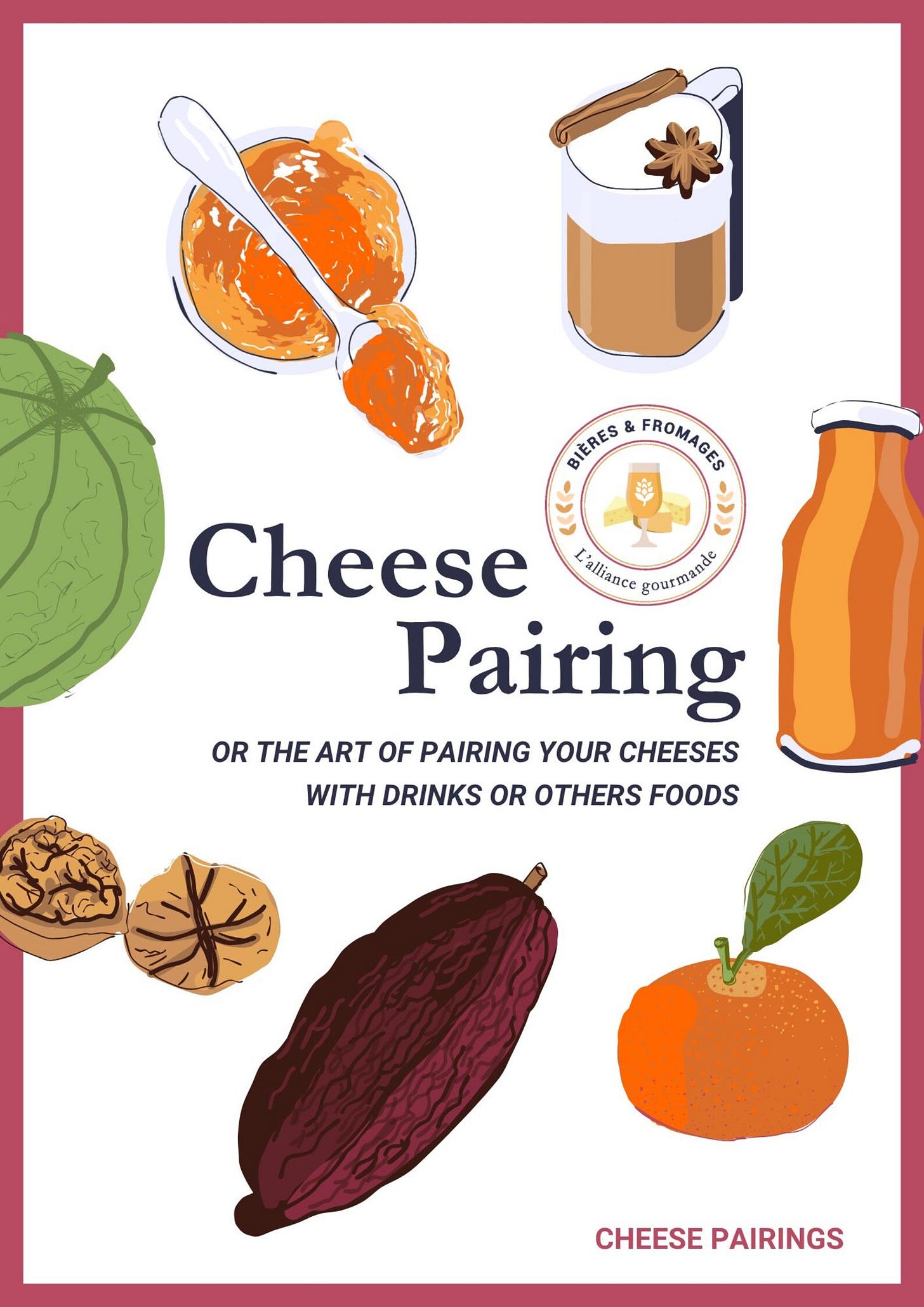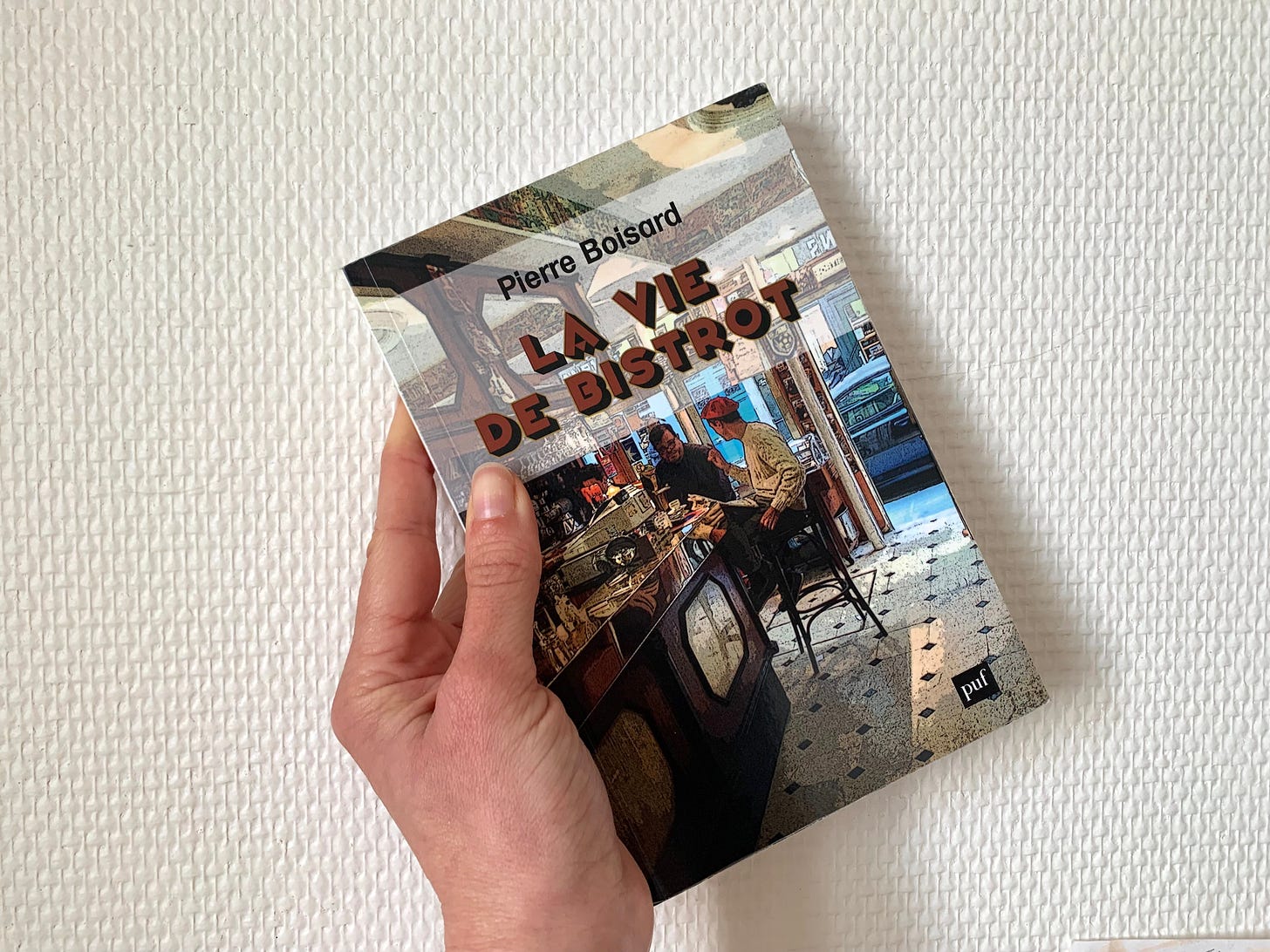One of my favorite food moments on television is the completely unhinged Seven Fishes dinner in the Bear. While this episode is definitely sensationalized, I think many of us can resonate with the panic one feels when preparing a meal for guests: the ticking clock, the feeling we're running behind, and above all, stress killing even the possibility of enjoying the meal we’ve worked so hard to prepare.
I’m the last person to ascribe to the French way as the be-all and end-all of parenting, dressing, sex, dating, etc… but in this particular case, I’ve got to say, the French are admirably calm when hosting dinner parties – even the six-course extravaganza that was protected as UNESCO World Heritage in 2010. This sang froid isn't in their DNA or the result of all that red wine they're quaffing. It all comes down to their ability to outsource, something that’s reflected in everything from the appetizer to the dessert to the top-quality store-bought baguette that accompanies it all.
Let’s begin at the beginning, with apéritif. Contrary to the aperitivo culture of Italy or the tapas culture of Spain, apéro in France is far more about the drinks than it is about the snacks. When enjoying apéro at a bar, you might get a small saucer of peanuts or popcorn; at home, my favorite apéro snacks are the cheesy biscuits by Michel et Augustin, although a few rounds of top-notch saucisson wouldn't be unwelcome either. My favorite comes from the Marion family in Ardèche. Either is the perfect accompaniment to everything from beer to pastis to the sweet white wine that is my personal favorite.
As for the appetizer, you've got a few choices. Charcuterie is a common offering, with many families plunking down a jar of house-made pâté and some cornichons; others will pair cured ham (why not one aged in a church?) with seasonal cantaloupe. If you prefer your appetizer of a less meaty variety, a raw salad like grated carrots, beets in vinaigrette, or celery remoulade is a great option – and as an added bonus, all of these improve when made in advance and left to chill in the fridge.
If you really want to impress, however, head to the traiteur: These high-end delis specialize in appetizers that are true works of art, like eggs set en gelée (in aspic) or a perfect pâté en croûte. I source both from Maison Verot – and there’s no shame in name-dropping your own traiteur. This cultural difference surprises many Americans, who pride themselves in from-scratch cooking. But in France, sharing your favorite addresses is as laudable as sharing your time-tested recipe.
For a dinner party main dish, most of the time, French people opt for something that won't suffer if conversation postpones its arrival. Centuries before they started cooking meat in a pan or on a grill, the French had mastered slow-simmered and roasted dishes; today beef bourguignon or a roasted poulet fermier are easy crowd pleasers. Other options for a main dish might include a bountiful Alsatian choucroute or a vibrant, seasonal ratatouille served with a quick omelette stirred together right before sitting down. But dishes where cuisson is measured in milliseconds and the host is forced to abscond to the kitchen for more than 15 minutes are rare in French households.
After the main is served, things get even easier. For the cheese course, a few well-selected chunks will be enjoyed with the same baguette that has been lingering on the table since the beginning of the meal – no need for fancy accompaniments or a cracker selection. I usually source my cheeses from one of my favorite cheese shops in Paris: Here are my picks in arrondissements 1 to 7, 8 to 14, and 15 to 20.
And as for dessert, home baking in France is resolutely simple, as I explored with Alexandra Crapanzano for the BBC. My ex-father-in-law was an excellent home baker; his specialty was an apple tart he would make first thing in the morning and serve room temperature, as it should be. But many French people will simply nip out to the pâtisserie for an assortment of ornate opéras and éclairs or one imposing fraisier or tarte aux abricots to portion and serve. My favorite pâtisseries come from pastry master Carl Marletti, though there’s no shortage of beautiful shops to discover in Paris and beyond.
All that to say… when hosting in France, there’s no need to go full Mrs. Berzatto. A dinner party here is all about enjoyment – even for the host.
Cheese of the Week
Saint-Marcellin is a thin-skinned cow’s milk cheese from the former province of Dauphiné, not far from Lyon. Its flavor is relatively mild: nutty, a little bit mushroomy, and wholeheartedly lactic.
Depending on how it’s aged, Saint-Marcellin may be dense and creamy or oozy and runny. It’s always sold in a little dish, be it plastic, terra cotta, or wood, which doesn’t just make it cute – it also keeps all the ooze contained.
To discover more of my favorite cheeses, be sure to follow me on Instagram @emily_in_france, subscribe to my YouTube channel, and tune into the Terroir Podcast, where Caroline Conner and I delve into France's cheese, wine, and more one region at a time.
What I’m Eating
I’ve tried many bouillons in Paris, from the gorgeous, historic Bouillon Julien to the relative newcomer Bouillon Pigalle. My most recent foray into the category was Le Petit Bouillon Pharamond, a mainstay of the neighborhood around Les Halles since 1832 specializing in food from Normandy. And despite my worries that it might be a tourist trap, it proved fairly enjoyable… provided you’ve done a bit of research ahead of time. More on the blog.
Where I’m Going
1. To the launch of Version Originale volume three! I love this bilingual literary magazine and have several close friends whose words are featured in this edition.
2. To Chanceux, to check out what promise to be pretty bonkers sandwiches.
3. To Nantes, to visit some dear friends before we embark on the third Nantes Writers’ Workshop!
What I’m Doing
TERRE/MER is a ceramics and culinary retreat I co-host in the Mediterranean seaside town of la Ciotat. This long weekend is governed by creativity and terroir, encompassing a 10-hour ceramics workshop, three locally-sourced meals a day (prepared with love by yours truly), hands-on cooking workshops, a cheese tasting (bien sûr), and more.
We'll be welcoming our next small group September 4-7. Book your spot now!
What I'm Writing
1. More than 80 years after D-Day, the recipes and ingredients introduced during France's wartime occupation are slowly making a comeback. For the BBC.
2. There are enough nanoplastics in some brains to make a plastic spoon — here are 5 easy ways to reduce your exposure. For Organic Authority.
3. From the archives: The 14 French cheeses you need to try at least once, according to experts. For Mashed.
Friends of Emily in France
I’m surrounded by some pretty exceptional entrepreneurs, writers, and tastemakers, and I think you should know about them too! From now on, each week, I’ll be profiling one person I think you should be aware of.
I first met Roxane Fourgous while we were both judging a cheese contest at the Salon du Fromage. Her specialty is pairing cheese and beer, but in her newly published guide, she’s expanded that knowledge to include hot and cold beverages, fruits and vegetables, nuts, and even chocolate. I can't wait to try out some of her intriguing pairings, like Fourme d'Ambert and mango or Salers with Earl Grey tea. Check it out here!
FAQs
With the goal of bringing you the content you crave, I'm soliciting your help. What questions can I answer for you? Drop them into the newsletter chat, and I’ll answer as many as I can!
What I'm Reading
1. Part biography, part socio-cultural commentary, La Vie de Bistrot delves into the history and legacy of the bistro. It opened my eyes to so many elements of this quintessentially Parisian space, which isn’t nearly as linked to food consumption as so many would think. As with Pierre Boisard’s book on Camembert, the moment I finished my library copy, I ordered my own to keep!
2. This edition of Letters of Note – a newsletter I read fairly religiously – featuring the wit and wisdom of Flannery O’Conner, which spoke to me more than most. In Letters of Note.
3. This exploration of why Millennial midlife crises look so different – and how we’re all grappling with the fact that our lives don’t look like the ones our parents had. In Vox.
A bientôt !



